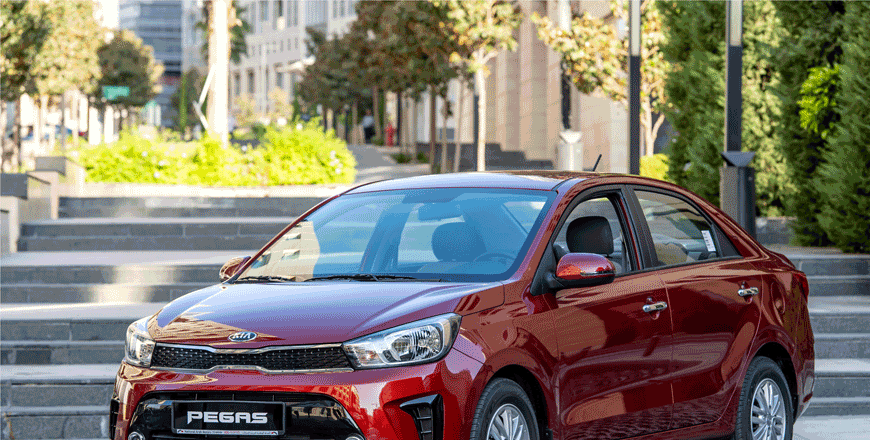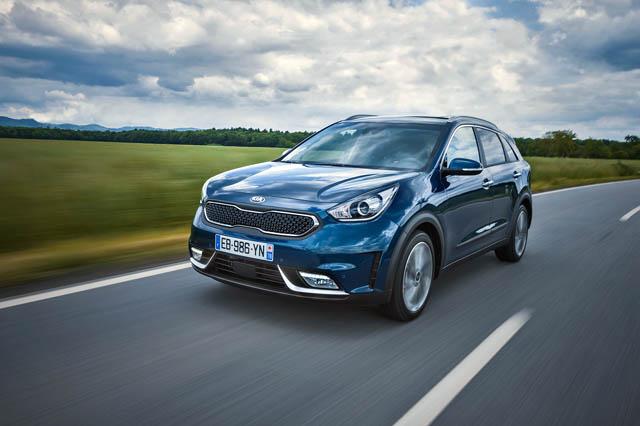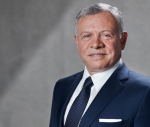You are here
Kia Sportage 2.4 GDI AWD: Sportier successor
By Ghaith Madadha - Mar 07,2016 - Last updated at Mar 07,2016

Photo courtesy of Kia
A car-like SUV, the crossover segment’s origins are difficult to pin down. Whether the crossover originates with the 1970s Lada Niva, Matra-Simca Rancho and AMC Eagle or earlier cars, the Kia Sportage was nevertheless among the earliest modern incarnations of such cars, and first launched in 1993 during Kia’s pre-Hyundai partnership with Ford and Mazda years.
Predating the crossover segment, the Sportage is yet among the most defining such vehicles, with its fourth generation launched globally earlier this year. Launched globally earlier in the year and due to debut in Amman early next week, the new fourth generation Kia Sportage is ambitious with good reason, and reflects the Korean brand’s ever growing confidence. And with improved dynamics, refinement, technology and interior appointment, it now looks at the industry’s most established brands as direct rivals.
Taut and stiff
A tightly penned, fluent and assertive design as a whole, the new Sportage’s front is however a more radical evolution of Kia’s corporate face, featuring higher set headlights stretched far back along scalloped bonnet edges. Meanwhile, Kia’s distinctive “Tiger” nose grille is wider and taller for better engine cooling, and sits below the headlights, flanked by large foglight units.
With smooth surfacing, discretely bulging arches and haunches, and a distinct sense of forward motion created by its longer rear spoiler, swept back bonnet and roof lines, and window outline, the Sportage’s silhouette implies a sense of urgency. The new Sportage is 40mm longer and as wide as its predecessor, and features a longer
wheelbase for improved legroom and stability.
Built to be stiffer vehicle for improved ride, handling, refinement and collision safety, the new Sportage uses a 51 per cent advanced high strength steel content compared to the outgoing mode’s 18 per cent. With particular attention paid to its pillars, sills, wheel arches and roof, the new Sportage’s torsional rigidity increases by 39 per cent, and with a total host of safety features, achieves a maximum 5-star EuroNCAP crash test rating.
Smooth delivery
Driven in 2.4 GDI guise, the Sportage is fitted with standard four-wheel drive and six-speed automatic gearbox. An efficient direct fuel injection engine with “under-square” dimensions the 2.4 GDI provides adequately responsive low- and mid-range abilities. Refined and well insulated for vibrations the 2.4 GDI also remains smooth and progressive throughout its rev range to redline.
Developing 181BHP at 6000rpm and 175lb/ft torque at 4000rpm, the Sportage’s 2.4 GDI — through somewhat aggressive first and second gear ratios — carries its 1,560kg mass from standstill to 100km/h as quick as it need be at 9.2 seconds. Capable of a 192km/h top speed and with an enlarged 62-litre fuel tank for extended range, the Sportage 2.4 returns 8.5l/100km combined cycle fuel efficiency.
Smooth and quick shifting, the Sportage 2.4 GDI’s six-speed automatic features selectable drive modes for sharpened responses when desired for sportier driving. It is mated to a four-wheel drive system that drives the front wheels in most conditions for efficiency, but can send up to 50 per cent power rearwards when necessary to maintain stability and traction.
Tidy and reassuring
Having made significant advances in terms of design, luxury, technology, packaging and brand equity, Kia now seems focused on finessing its vehicles’ driving dynamic. To that end, former BMW M Division Vice President Albert Biermann was drafted in to oversee high performance car programmes, as well as ride and handling development for garden variety models, as clearly evidenced in the new Sportage.
Riding on fully independent MacPherson strut front and now dual lower-arm multi-link rear suspension, the new Sportage features a raft of modifications for improved ride and handling attributes. Starting with stiffer more isolated bushings with revised mounting points, stiffer wheel bearings and cross member, further forward mounted steering gearbox and revised damper tuning and suspension geometry.
Better refined and more stable as a result, the Sportage, however, also makes dynamic gains. Sharper and more nimble, the Sportage’s better steering feels tighter and more precise on-centre and as it weighs up in corners. Eager into corners and much less susceptible to understeer, the Sportage tucks in tidily and feels agile through tight but quick switch backs.
Refined and comfortable
Well controlling body lean through corners, but without sacrificing ride refinement — even with firmer and grippier 245/45R19 tyres, as tested — the Sportage’s dynamic tuning finds a nice compromise between forging daily comfort and sporty manners when pushed a little harder. Meanwhile, rear grip and highway stability are reassuring, and noise, vibration and harshness isolation refined over imperfect surfaces.
Better appointed, roomier and more comfortable inside, the new Sportage features a clean, logical and ergonomic dash and console layout and uses plenty of soft textures and classy fittings in prominent places. With longer wheelbase, passenger space is improved all-round, including better-than-expected rear seat access and headroom. Ergonomics are good, but the gear lever is set closer than ideal for larger, taller drivers.
Featuring a good driving position with 10-way adjustable driver’s seat with now firmer more supportive centre cushion, rear passengers also get more seat tilt adjustability. Well-kitted, the highlights of the Sportage’s available infotainment, safety and convenience systems include 8-inch touchscreen, reversing camera, wireless phone charging, automatic tailgate opening, blindspot, high beam and lane change warning and assistance systems.
TECHNICAL SPECIFICATIONS
Engine: 2.4-litre, transverse 4 cylinders
Bore x stroke: 88 x 97mm
Compression ratio: 11.3:1
Valve-train: 16-valve, DOHC, variable valve timing, direct injection
Gearbox: 6-speed automatic, four-wheel drive
Gear ratios: 1st 4.212; 2nd 2.637; 3rd 1.8; 4th 1.386; 5th 1.0; 6th 0.772
Reverse/final drive: 3.385/3.195
Power, BHP (PS) [kW]: 181 (184) [135] @6000rpm
Specific power: 76.7BHP/litre
Power-to-weight: 116BHP/tonne
Torque, lb/ft (Nm): 175 (237) @4000rpm
Specific torque: 74.1Nm/litre
Torque-to-weight: 112Nm/tonne
0-100 km/h: 9.2 seconds
Top speed: 192km/h
Fuel economy, urban/extra-urban/combined: 11.8-/6.7-/8.5-litres/100km
CO2 emissions, combined: 199g/km
Fuel capacity: 62 litres
Length: 4480mm
Width: 1855mm
Height: 1645mm
Wheelbase: 2670mm
Track, F/R: 1613/1625mm
Overhang, F/R: 910/900mm
Ground clearance: 172mm
Approach/break-over/departure angles: 17.5°/19.5°/24.6°
Headroom, F/R: 997/993mm
Legroom, F/R: 1129/970mm
Shoulder room, F/R: 1450/1400mm
Cargo capacity, min/max: 491/1480 litres
Aerodynamic drag co-efficient: 0.33
Kerb weight: 1560kg
Suspension: MacPherson struts/multi-link
Steering: Electric assistance, rack & pinion
Turning circle: 10.6 metres
Lock-to-lock: 2.71-turns
Brakes, F/R: Ventilated discs, 305mm/discs, 302mm
Tyres: 245/45R19
Related Articles
On the market since 1993 and before the compact crossover became a runaway success and distinct automotive segment.
Developed with emerging markets in mind and built in collaboration with Kia’s Chinese Dongfeng partner, the Pegas arrived in the region back
At a casual and distant glance one could be forgiven for mistaking the Kia Niro for a compact crossover SUV (CUV), perhaps a somewhat more a


















